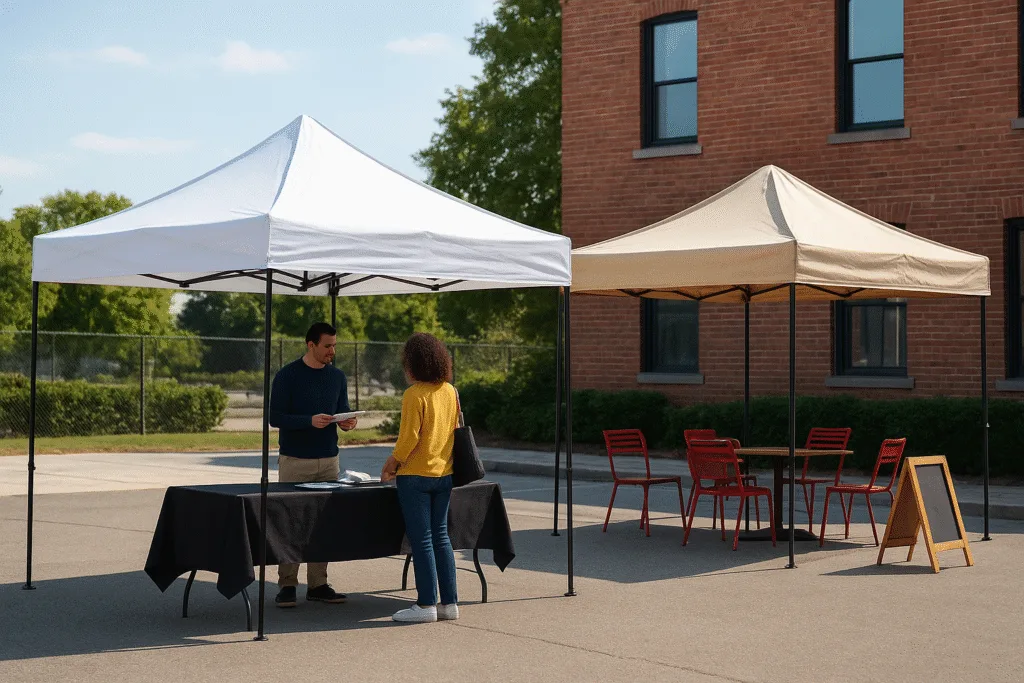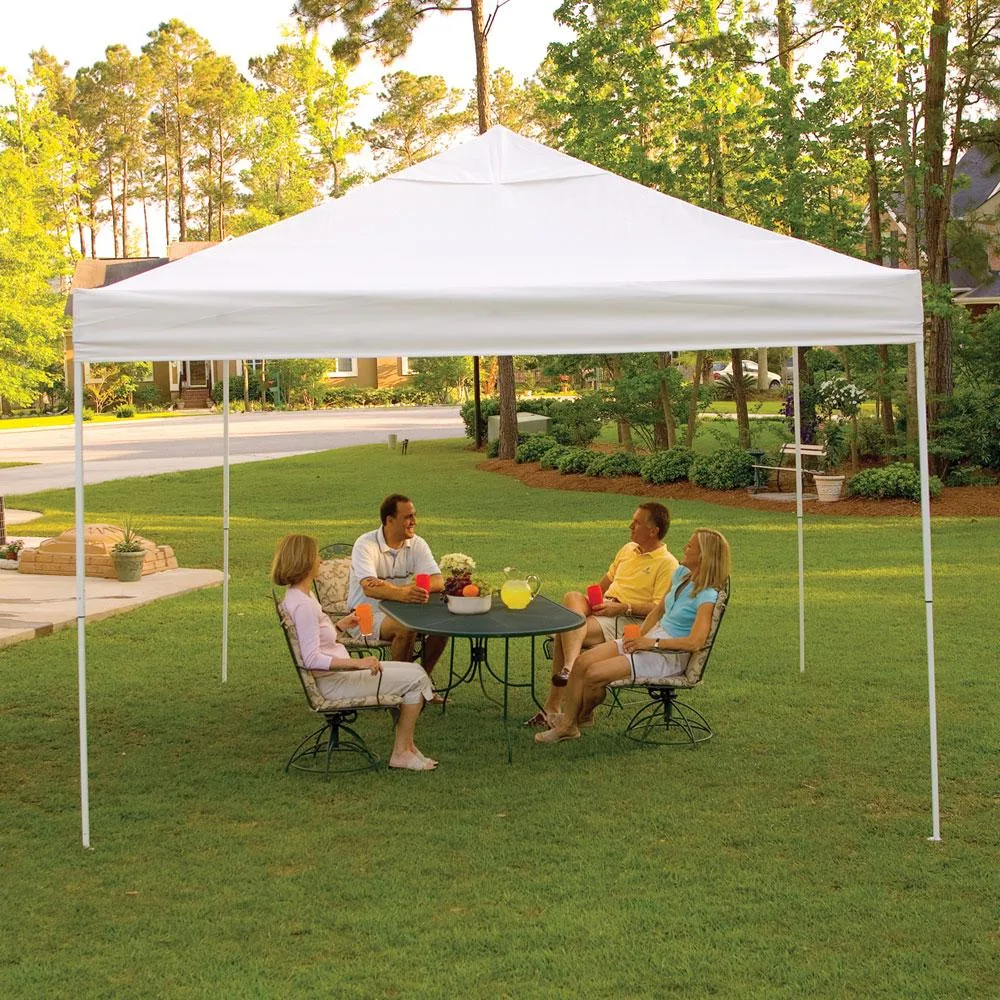When it comes to event setups, outdoor promotions, and trade shows, businesses often face the question: pop up tent vs canopy— which one is better? Both structures serve similar purposes, but they differ in setup time, durability, portability, and overall cost.
Understanding the differences between a pop up tent vs traditional canopy helps businesses make smarter investments. In this guide, we’ll break down the pros, cons, and best use cases for each option so you can choose the one that fits your business goals.

Pop Up Tent vs Traditional Canopy – Key Differences
A pop up tent is designed for convenience. It folds easily, requires minimal setup time, and is ideal for mobile businesses or frequent events. On the other hand, a traditional canopy is more permanent, often heavier, and built for long-term use.
| Feature | Pop Up Tent | Traditional Canopy |
|---|---|---|
| Setup Time | 5–10 minutes | 30+ minutes |
| Portability | Lightweight, foldable | Heavy, requires transport |
| Durability | Moderate | High, long-term |
| Cost | Affordable | Higher investment |
| Best For | Trade shows, farmers’ markets, short events | Outdoor restaurants, semi-permanent setups, long-term branding |
Benefits of a Pop Up Tent
Easy Setup for Busy Events
The main advantage of a pop up tent is speed. Businesses attending trade shows or weekend markets often need to set up quickly. Pop up tents require little training and can be ready in minutes.
Portability and Storage
Pop up tents are lightweight, making them easy to transport in small vehicles. This flexibility allows small businesses and startups to expand their reach with minimal overhead.
Advantages of a Traditional Canopy
Long-Term Durability
A traditional canopy is usually made of stronger frames and heavy-duty fabric, built to withstand repeated use and harsh weather. Restaurants, cafes, and outdoor venues often rely on canopies for permanent coverage.
Professional Branding
Traditional canopies offer more customization options, larger sizes, and the ability to serve as permanent outdoor extensions of a business.
👉 According to Outdoor Industry Association, long-term canopy installations have become popular among restaurants seeking durable outdoor dining solutions.

Pop Up Tent vs Traditional Canopy – Cost Considerations
When analyzing pop up tent vs traditional canopy, budget plays a big role.
- Pop up tents cost less upfront, making them a smart choice for businesses attending multiple short events.
- Traditional canopies require higher investment but deliver long-term value, especially for businesses needing permanent or weather-resistant structures.
Pop Up Tent vs Traditional Canopy – Which Should You Choose?
If your business frequently attends mobile events, trade fairs, or seasonal markets, a pop up tent is the better choice. Its portability and fast setup make it highly efficient.
However, if you want a structure that represents your brand long-term—like a restaurant patio or a semi-permanent outdoor sales area—then a traditional canopy is the smarter investment.
Maintenance and Lifespan
Proper maintenance affects the longevity of both types.
- Pop up tents last 2–4 years with regular use.
- Traditional canopies can last 5–10 years depending on material and weather exposure.
👉 As Event Industry News notes, businesses often underestimate the impact of canopy material and maintenance on overall event ROI.
Frequently Asked Questions (FAQ)
Q1: What is the main difference between a pop up tent vs traditional canopy?
A pop up tent is portable and quick to set up, while a traditional canopy is more durable and designed for long-term use.
Q2: Which lasts longer, a pop up tent or a canopy?
Traditional canopies typically last longer due to stronger frames and heavier fabric.
Q3: Is a pop up tent suitable for windy conditions?
Pop up tents can withstand light winds, but traditional canopies are better for heavy weather conditions.
Conclusion
When evaluating pop up tent vs canopy, the choice depends on your business model. If flexibility and mobility are key, go for a pop up tent. If long-term durability and professional appearance matter more, choose a traditional canopy.
By aligning your choice with your business goals, you’ll maximize value and efficiency in every event or setup.
